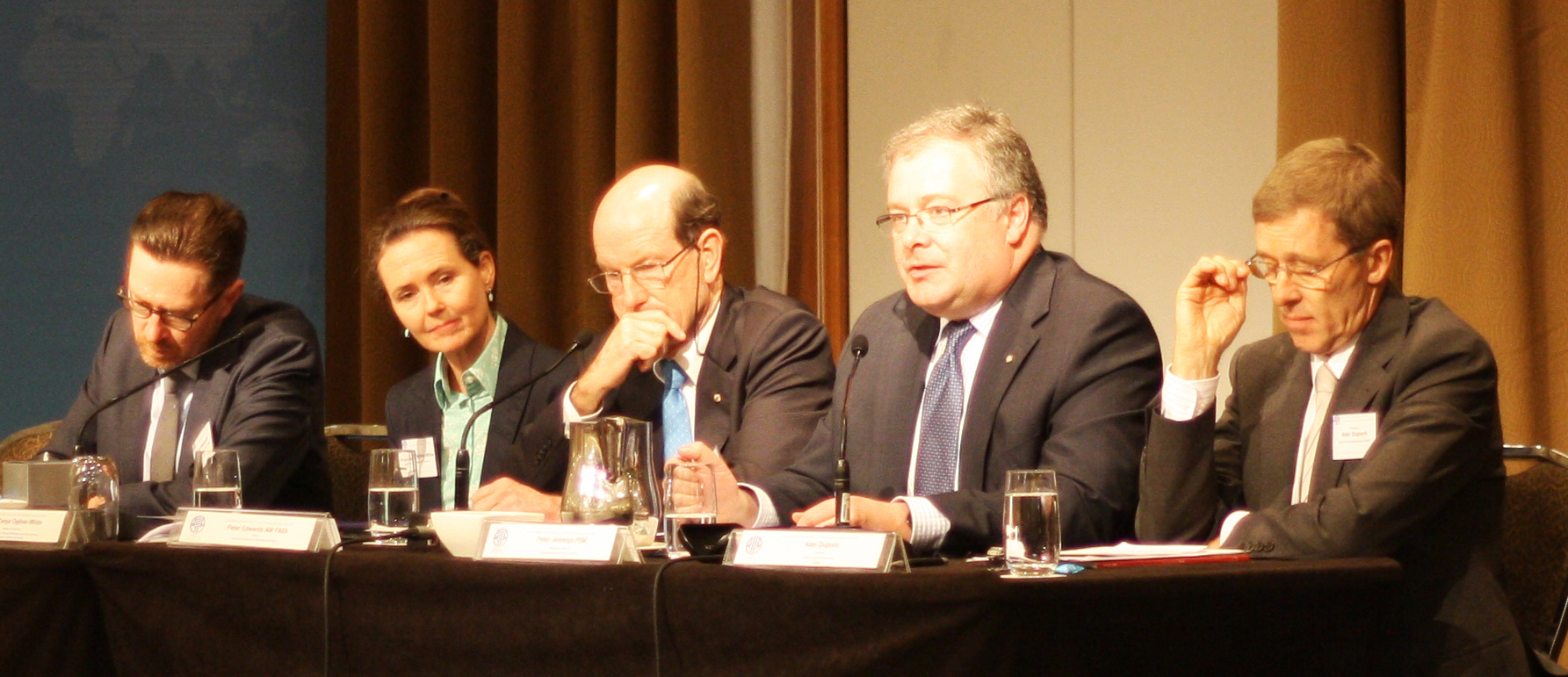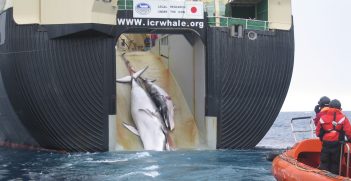Strengthening Australia’s Security: Proposals for Reducing Nuclear Dangers

At the 2014 AIIA National Conference, Dr Tanya Ogilvie-White, Research Director at ANU’s Centre for Nuclear Nonproliferation and Disarmament, stressed that nuclear risks are growing in the Indo-Pacific, and that Australia, with its strong history of pro-active non-proliferation and disarmament diplomacy, could do more to help alleviate those risks.
My brief talk focuses on nuclear challenges – an area where there’s major overlap between Australian national security and international security. Australia already has a good record of leadership in this issue – but developments in our region mean we now need to do more, and to do some things differently.
Dangers Related to Vertical Nuclear Weapons Proliferation in Asia
Nuclear weapons arsenals are growing in Asia – ours is the only region where that’s happening; everywhere else they’re shrinking. China, Pakistan, India, and North Korea are all making qualitative and quantitative improvements to their nuclear weapons capabilities.
We’re seeing the early signs of nuclear arms racing dynamics at work in Asia – we’re at a turning point. A combination of strategic uncertainties and developments in missile and space technologies are putting pressure on nuclear postures and doctrines.
Whatever your views on nuclear weapons, it’s a fact that we’ve moved into unknown territory in terms of deterrence and strategic stability. The likelihood of accidental or intentional nuclear use is growing.
Dangers related to Civil Nuclear Expansion in Asia
It’s not just nuclear warheads that are the problem. Civil nuclear infrastructure is expanding more rapidly in Asia than anywhere else in the world.
Unless the right controls are in place, and other states are confident they’re in place, this could spark further horizontal proliferation – the spread of nuclear weapons to more countries. This is because nuclear technology is dual-use: it has both peaceful and military applications.
The expansion of civil nuclear facilities can also have consequences for terrorism threats. The barriers to nuclear terrorism are very high, but they’re not insurmountable, and the consequences of a nuclear terrorist attack could be appalling.
It’s important not to exaggerate this threat, but it’s fair to say that terrorist groups that manage to acquire significant territory and state infrastructure pose a particularly serious nuclear security challenge.
Australia’s Leadership
Australia already shows great leadership on nuclear issues – right across the board. Nuclear security standards here are regarded as some of the best in the world. Australian efforts to help others improve standards in the Asia-Pacific, and its leadership in the Nuclear Security Summit process are widely recognized and greatly appreciated.
Over the years, Australia’s leadership in the International Atomic Energy Agency has also earned global respect (especially the work on safeguards).
In the Security Council, the Australian mission’s work on improving non-proliferation sanctions will be an important legacy of the past two years.
I should also mention Australia’s leadership through the Nuclear Non-Proliferation and Disarmament Initiative (NPDI) – a coalition of 12 countries that have been encouraging states to adopt a balanced approach to nuclear non-proliferation and disarmament. It’s done some good work, especially on drawing international attention to the dangers posed by nuclear weapons that are kept in a state of high operational alert.
All of this work reflects Australia’s commitment to reducing nuclear dangers, for the sake of Australians and for the sake of humanity. But, as I said at the beginning, now that nuclear dangers are accelerating in our own region, we’re going to need to do more in some areas, and do things differently in others.
Proposals for Reducing Nuclear Dangers
To start, there’s one area where we need a policy reversal, or at the very least, much more restraint: that’s Australia’s support for US-led missile defence in Asia. The idea of missile defence is appealing, but the technology is unreliable, and it actually increases proliferation pressures. Missile defence cooperation with the US and Japan, and especially talk of deploying systems on Australian ships as part of a future Asia-Pacific missile defence shield, is doing potentially long-term damage to Australia’s relations with China. This issue needs to be handled much more carefully than it is at the moment, especially in the Australia-US AUSMIN dialogue.
Second, in the area of export controls, we need to tighten the Australia-India civil nuclear cooperation agreement that the government signed last month. This will help ensure that we know what happens to Australia’s uranium, and that it doesn’t end up helping India to expand its nuclear weapons arsenal. We need to be able to track what’s happening to Australia’s uranium, otherwise we could be helping stoke a nuclear arms race in South Asia. I understand the strategic arguments that are influencing Australia’s desire to engage more deeply with India, but it’s important not to think in one-dimensional terms about any bilateral relationship.
Third, In the area of cyber security, cyber protection measures need to be constantly updated at Lucas Heights (the location of Australia’s nuclear reactor). I know that’s an issue of concern. As a recognised leader in nuclear security, Australia could do more to raise awareness in our region of what can be done to protect nuclear facilities from cyber-attack. The cyber initiative Australia and Malaysia are leading in the ASEAN Regional Forum would be a good place to tackle that issue.
Lastly, and most importantly, we need to push for a global convention on the no-first-use of nuclear weapons. China already has a no-first-use doctrine, but that doctrine is under pressure. India also has a qualified no-first-use commitment, but that’s also looking more precarious. If the nine nuclear-armed states pledged only to use their nuclear weapons for deterrence purposes to deter and respond to nuclear attack, nuclear dangers would dramatically decrease.
A commitment to no-first-use would also keep the nuclear non-proliferation treaty (NPT) alive. The NPT is a strategic treaty – it serves everyone’s interests, even those of the states that are not members (India, Israel, Pakistan and North Korea). It’s currently under intense strain though, with the non-nuclear-weapon states increasingly disillusioned by slow disarmament progress, and the nuclear-weapon states frustrated by what they see as unrealistic calls for a nuclear weapons ban treaty. A no-first-use convention would be a realistic step in the right direction, and the nuclear-armed states might well be more amenable to discussing it than many people assume. Australia could show leadership on this by calling for negotiations to begin, either in coalition with its NPDI partners or through a new diplomatic coalition.
Dr Tanya Ogilvie-White is Research Director at the Centre for Nuclear Non-Proliferation and Disarmament, Crawford School of Public Policy, Australian National University.





